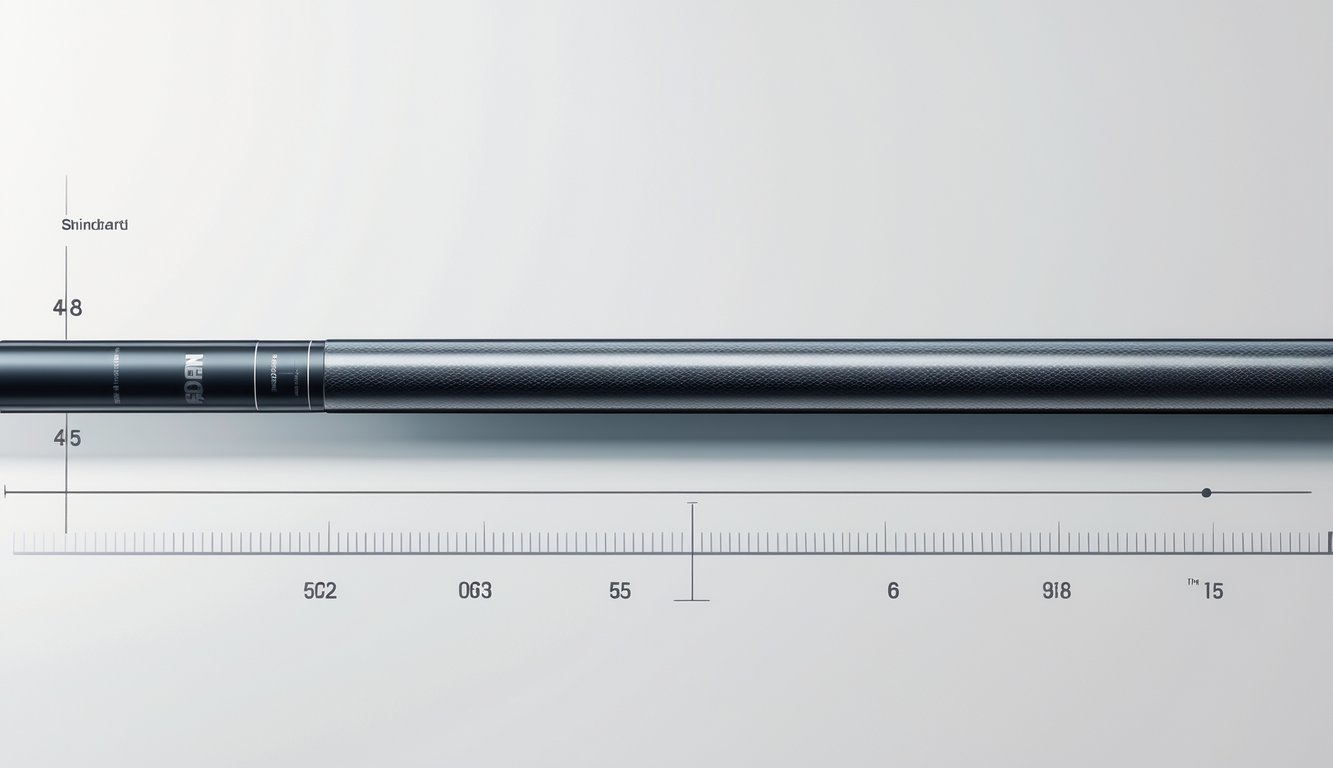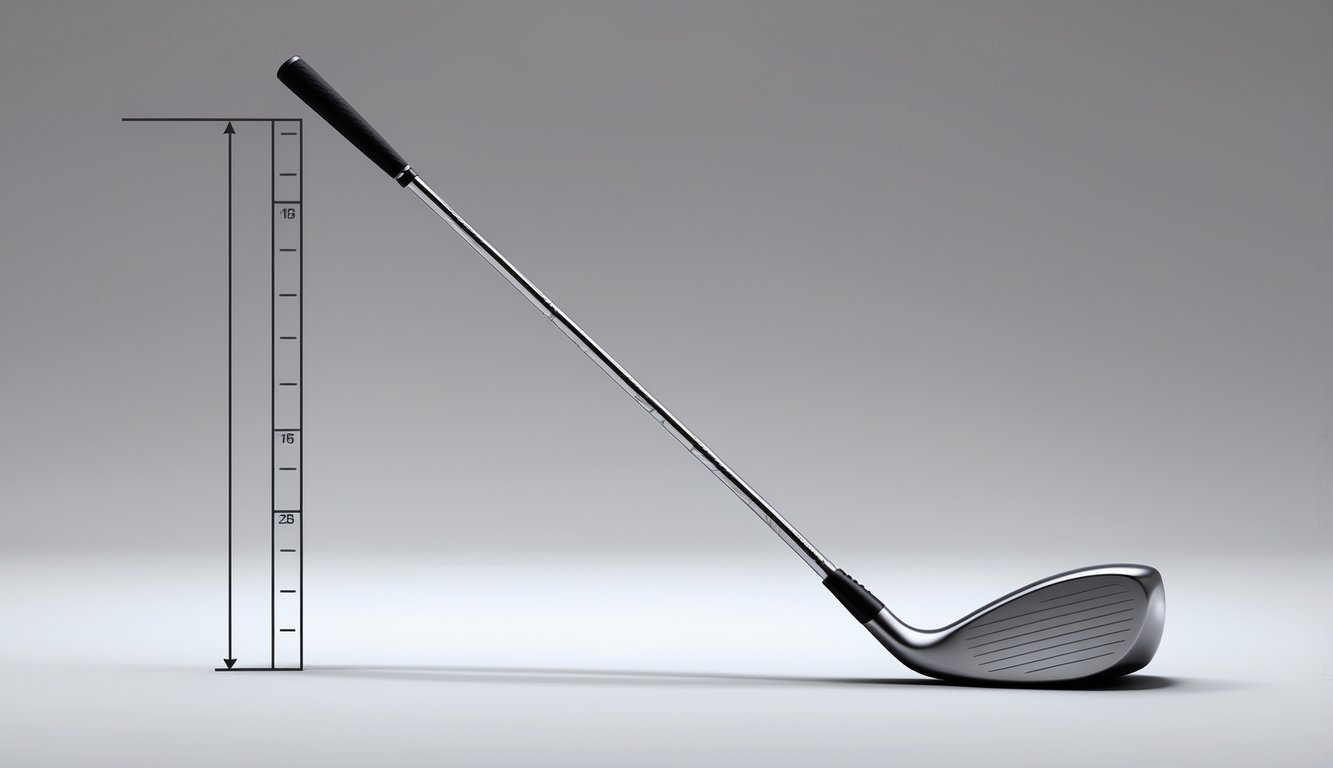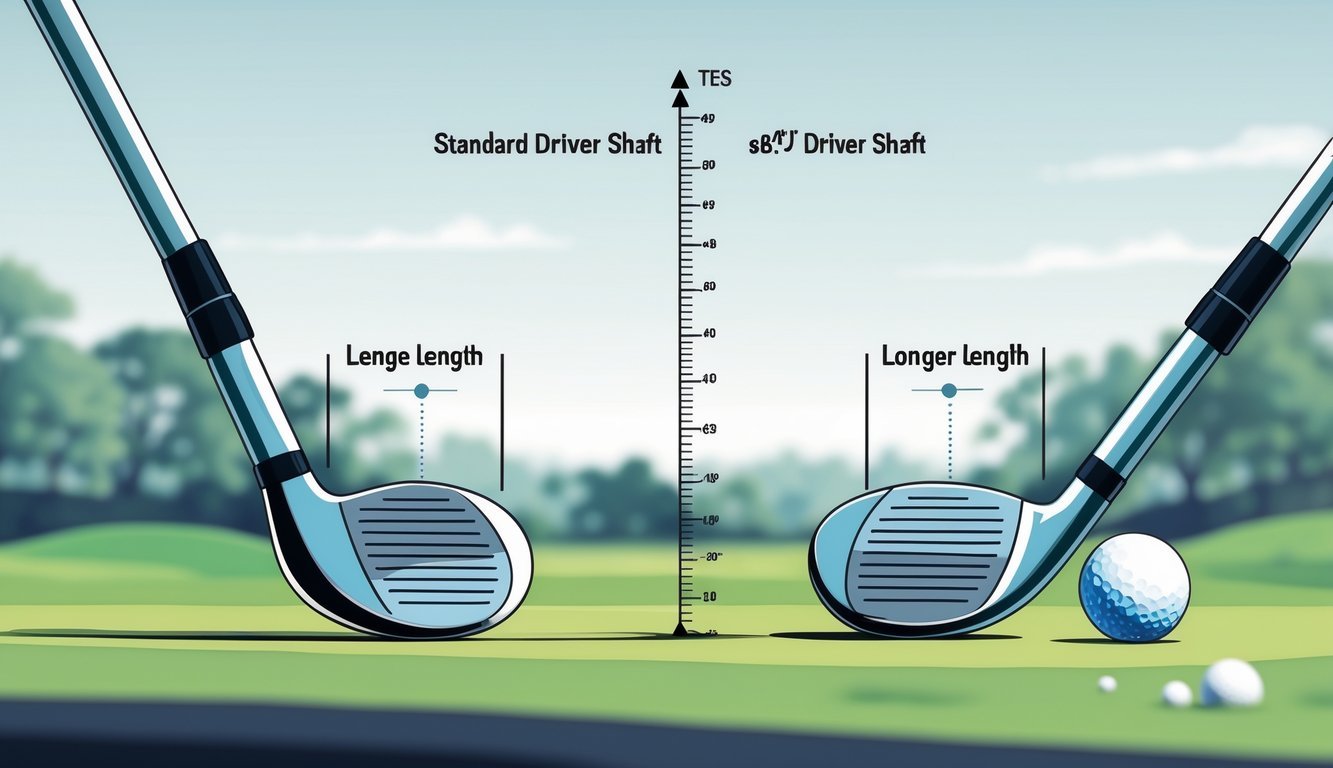Physical Address
304 North Cardinal St.
Dorchester Center, MA 02124
Physical Address
304 North Cardinal St.
Dorchester Center, MA 02124
Most golf drivers have shaft lengths around 45 inches, impacting swing dynamics, distance, and accuracy based on individual player characteristics and preferences.

So, you’re curious about the standard length of a driver shaft? Most golf companies stick pretty close to 45 inches.
That’s their go-to size for drivers, though you’ll see some brands stretching a bit longer or trimming things down—think anywhere from 44 to 46 inches.
Picking the right driver shaft length can totally change your swing and the way you play. If the shaft’s too long or too short, you might notice your shots getting a little wild or inconsistent.
Knowing what’s standard helps you recognize what you’re getting in stores and when it might be worth going custom.
It’s not just about comfort—matching your shaft length to your skill and swing style matters.
A lot of golfers swear by a slightly shorter shaft for more control, while a longer one might give you a bit more distance (but you could lose some accuracy).
Striking that balance is why it really pays to understand the basics before you buy.
Are you tired of spinning your wheels and getting nowhere? Simply put, you’re out of sync: you’re out of alignment with your astral configuration.
But: there’s a kind of map that can help you reclaim your alignment. Think of it as your own personal blueprint to success and happiness: a blueprint that will help you live your most amazing life.
Get started here.

When you buy a new driver, you’ll usually get a shaft at the standard length.
This measurement affects your swing, clubhead speed, and the way you perform overall.
Your gender and the rules of golf help define what’s considered standard.
For men, driver shafts typically land between 45 and 45.75 inches.
Most brands settle on this as their default, aiming for a sweet spot between distance and control.
It helps you swing fast without losing too much accuracy.
Women’s drivers come shorter, usually 43.5 to 44.5 inches.
That little difference makes the club easier to control and helps with swing mechanics.
Some models are built just for women, but a lot of brands let you pick your shaft length during a club fitting.
Your height, strength, and how you swing can all nudge you toward a longer or shorter shaft than these averages.
Golf club makers decide on their driver length after looking at research and listening to players.
They want their drivers to work for most folks right out of the box.
You’ll usually see factory drivers with shafts between 45 and 45.75 inches.
Some companies have tried pushing those numbers up for more distance, but longer shafts often mean less control.
Modern tech and club-fitting tools help brands find the best mix of distance and accuracy.
At the factory, they install shafts to fit the average golfer’s height and swing speed.
If you want something different, a fitting session can sort that out.
The USGA and R&A cap legal driver length at 46 inches for tournaments.
So if you’re playing competitively, you can’t show up with a driver longer than that.
On the PGA Tour, most pros use drivers between 44.5 and 45.5 inches.
They’d rather have control than chase extra length, since really long shafts can make things unpredictable at high speeds.
If you want to play in competitions, double check your driver’s length and make sure it fits these rules.
Anything longer than 46 inches is out, even if it helps you bomb it down the fairway during casual rounds.

Shaft length actually changes how far and how straight you hit the ball.
It tweaks the way the club feels, your swing arc, and how easily you can find the sweet spot.
The right length can help you balance power and control for better drives.
Longer shafts help you create more clubhead speed because of the bigger swing arc.
That usually means faster ball speed and more distance.
But the tradeoff? It’s harder to control the clubface, so you might find your shots scattering more.
Shorter shafts feel easier to control.
You’ll probably hit more fairways, even if you lose a little distance—maybe 5-10%.
For a lot of golfers, that extra accuracy is worth it.
Hitting repeatable, confident shots beats chasing a few extra yards into the trees.
Key tradeoff:
| Shaft Length | Effect on Distance | Effect on Accuracy |
|---|---|---|
| Longer (45.5″+) | More distance potential | Less control |
| Standard (~45″) | Balanced distance & control | Good balance |
| Shorter (44″ or less) | Slight distance loss | Better accuracy |
Your ideal driver shaft length depends on your swing.
If you’ve got a fast swing speed, you might handle a longer shaft—if you can keep the clubface square.
But if your swing’s a little wild, a shorter shaft definitely gives you more control.
A club fitter can check your swing speed, ball speed, and shot pattern to suggest the best length.
They often use your wrist-to-floor measurement to estimate what’ll fit your height and posture.
Try out a few shaft lengths when you test clubs.
See which one helps you hit the sweet spot and swing with confidence.
Height plays a big part in picking shaft length.
Taller players usually swing better with longer shafts, while shorter players get more control from shorter ones.
Age changes things too.
If you’re older and not swinging as fast, a shorter, stiffer shaft can actually help you stay consistent.
Younger or flexible golfers might prefer something longer or a bit more flexible.
Gender makes a difference as well.
Women usually use shorter, lighter shafts to match their frame and swing speed.
Picking a shaft that fits your body helps you get the most out of your drives.
Tour pros are actually moving toward shorter shafts.
Bryson DeChambeau, for example, plays a shaft around 44.5 inches.
Rickie Fowler’s is close to 44.75 inches.
These guys know that controlling the clubface and hitting the sweet spot matters more than just maxing out length.
You’ll see pros testing different shaft lengths at events like The Honda Classic.
Their results show that shorter shafts can tighten up shot patterns and boost consistency—without sacrificing much distance.
That confidence makes a difference when the pressure’s on.
If the best players in the world are trimming their shafts for more control, maybe it’s worth a try next time you get fitted.

You’ll notice that driver shaft length measurements, the right size for your height, and what top brands offer can all vary.
Picking a length that feels right really does help you play more confidently.
Start at the bottom of the clubhead’s sole and measure up to the top of the grip.
Don’t bend the shaft when you measure.
Keep the club straight and use a tape measure for the best results.
If you’re about 5’10”, you’ll probably do well with a shaft between 45 and 45.5 inches.
That length tends to balance control and distance for most people at that height.
Your height changes your stance and swing, so taller players usually need longer shafts.
Shorter players often swing better with shorter ones.
Adjusting the length helps match your posture and swing style.
Honestly, 44.5 inches suits a lot of golfers—especially if you want more control.
It’s a popular pick if longer shafts just aren’t working for your accuracy.
Brands like Taylormade and Callaway usually stick to stock shafts between 44.5 and 45.75 inches.
Most models hit right at 45 inches as a baseline, though you’ll see some variety.
Try checking golf club manufacturer websites.
They usually post fitting guides and charts online.
You might also find some helpful charts on golf blogs or forums.
People there love to share advice about shaft lengths, so it’s worth a look.